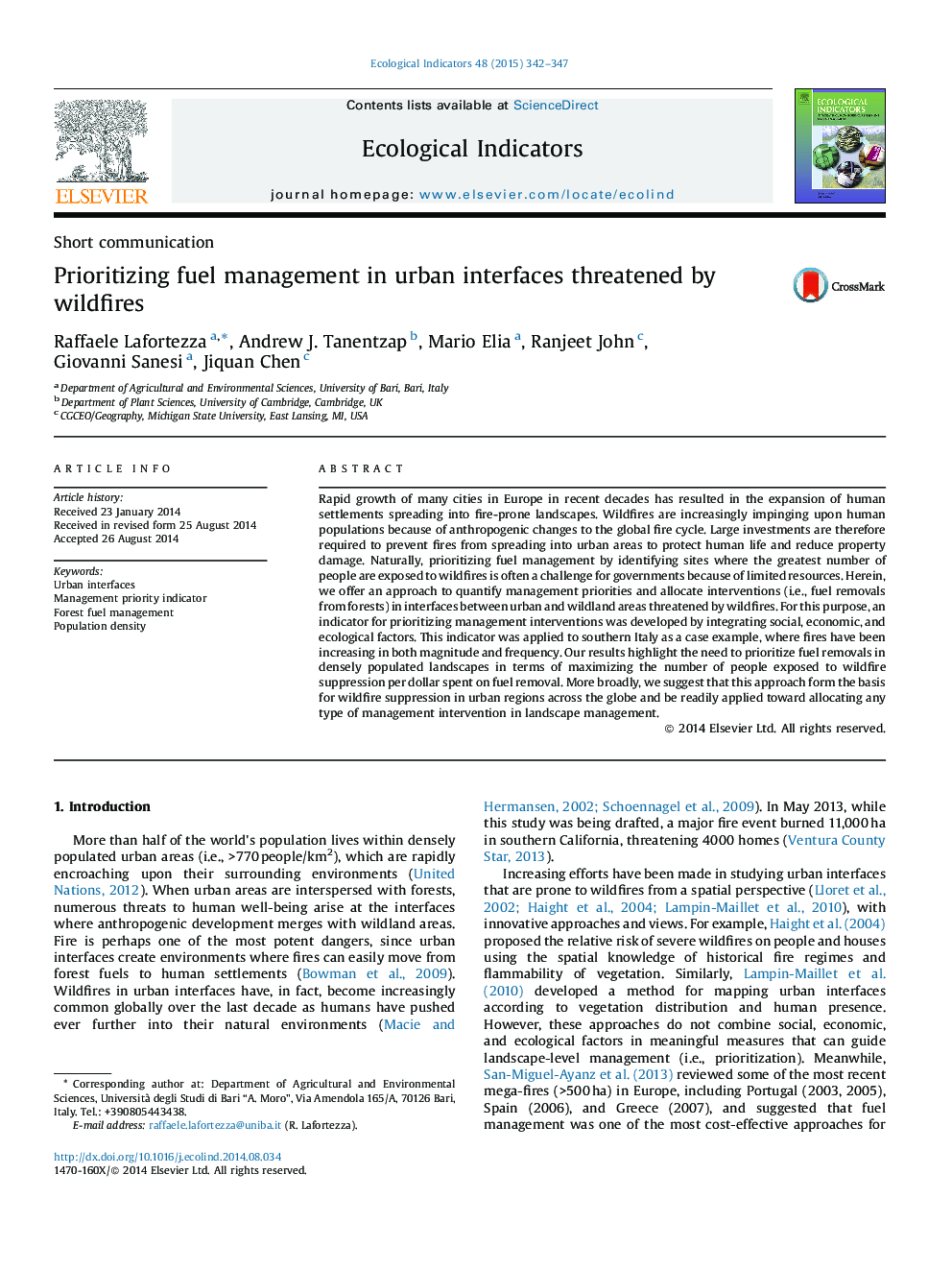| Article ID | Journal | Published Year | Pages | File Type |
|---|---|---|---|---|
| 6295027 | Ecological Indicators | 2015 | 6 Pages |
â¢We quantify management priorities in urban interfaces threatened by wildfires.â¢We develop an indicator (MPI) integrating social, economic and ecological factors.â¢The MPI may benefit more people than current fuel management approaches.â¢The MPI can support management interventions in any ecosystem.
Rapid growth of many cities in Europe in recent decades has resulted in the expansion of human settlements spreading into fire-prone landscapes. Wildfires are increasingly impinging upon human populations because of anthropogenic changes to the global fire cycle. Large investments are therefore required to prevent fires from spreading into urban areas to protect human life and reduce property damage. Naturally, prioritizing fuel management by identifying sites where the greatest number of people are exposed to wildfires is often a challenge for governments because of limited resources. Herein, we offer an approach to quantify management priorities and allocate interventions (i.e., fuel removals from forests) in interfaces between urban and wildland areas threatened by wildfires. For this purpose, an indicator for prioritizing management interventions was developed by integrating social, economic, and ecological factors. This indicator was applied to southern Italy as a case example, where fires have been increasing in both magnitude and frequency. Our results highlight the need to prioritize fuel removals in densely populated landscapes in terms of maximizing the number of people exposed to wildfire suppression per dollar spent on fuel removal. More broadly, we suggest that this approach form the basis for wildfire suppression in urban regions across the globe and be readily applied toward allocating any type of management intervention in landscape management.
